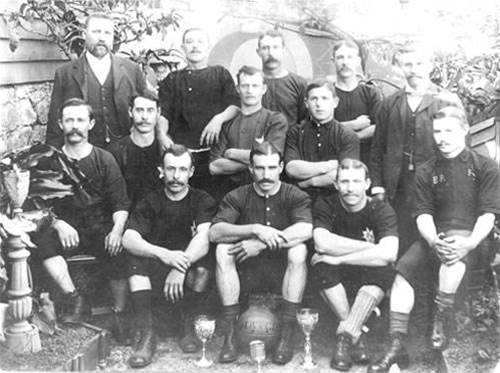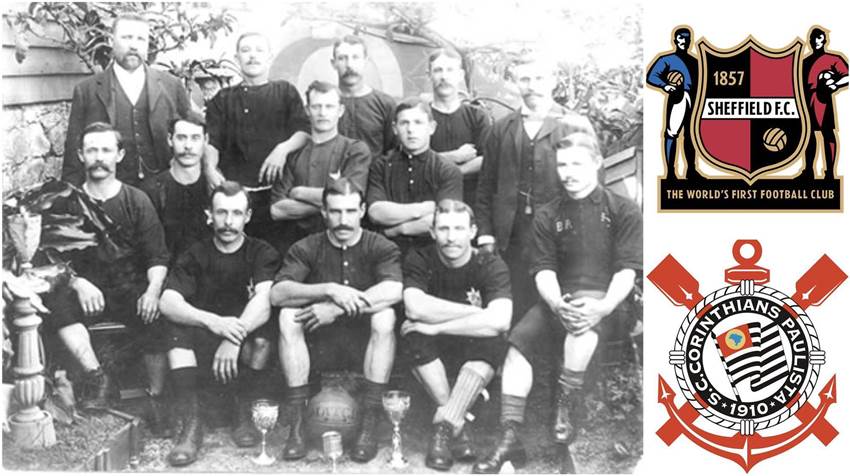The oldest footballing clubs in the world are hidden among the glitz of the footballing elite, although their legacy is something to marvel at...
It is often a case of learning the most unique facts of the world in the most unlikely places. A cruise ship on the open water off the coast of NSW and Queensland was an unexpected location to inspire a piece about where football’s origins began.
During a whiskey tasting class, Gavin, half Trinidadian, half Saudi Arabian bartender on P&O Cruises’ Pacific Explorer mentioned with pride that his hometown of Sheffield holds the record of the oldest living club in football history.
Football unearths the universal desire to belong, to connect and to revel in one’s culture in a primal tribal way. Self-worth can be defined in football, even if it is something as simple as an undying loyalty to a hometown club but which can represent so much more.
There is no denying that fans on the streets of Manchester, Madrid and Munich feel a sense of elation at what their clubs achieve, as it is their investment that makes the club the household name it is. Yet, some of the oldest clubs in the world are arguably some of the smallest.
From Europe, South America and even Australia, some of the oldest clubs in the world lie buried beneath the glitz and glamour of a football leagues dominated by exorbitant transfer fees. In the divisions below the upper echelons of national league football are the clubs that are an intangible fabric in the cloth of football that covers the world over.
The oldest club in the world – Sheffield FC

Looking beyond perennial football league members Sheffield United and Sheffield Wednesday there is a club bestowed with the title of “the oldest club in the world”, specifically, the oldest surviving club in world football; Sheffield FC.
Sheffield FC’s nickname, “The Club”, is indicative of the aura of exclusiveness it is held in as a football team. ‘The Club’ was officially recognised as being as such when it was formed on October 24, 1857, following the decision of Nathaniel Cresswick and William Priest to form a club after an informal matchup among members of the Sheffield Cricket Club. In addition, Cresswick and Priest constructed the first official set of football regulations known as the ‘Sheffield Rules’. The side and the game itself are much different today.
Currently, the side sits in Division Eight of the non-league hierarchy, but rather than investing its money in pushing the side further up to join English football’s elite, Sheffield FC have (as stated on their website) dedicated themselves to funding local and global community projects in order to “spread the true values of the game: Integrity, Respect and Community”. The side furthermore boasts a massive 12 teams on its books, from an under 14s girls side to an over 35 and ex-Sheffield players squad. A true hallmark of football history.

The oldest club in Australia – Balgownie Rangers FC
The club that holds the distinction of being the oldest club in Australia currently plies its trade in Division One of the Illawarra District League. Balgownie Rangers FC was formed in 1883. The club has maintained its status for much of its 136 year existence, with football an undeniable slow burner in the Australian sporting landscape many clubs have not lasted the lengths of sides in football mad countries such as England.
However A-League’s newest current club Western Sydney Wanderers has the distinction of being connected to Australia’s documented oldest (albeit extinct) footballing side. In a match in 1880, the Kings School put forward a team known simply as the ‘Wanderers’, marking the occasion as both the creation of the first known association football side and the contesting of the first association football game in Australian history.
Football in Australia has a limited but proud history. What Australia understandably lacks in world renowned stature, it makes up for in massive potential to create new history.
The oldest club in Brazil – Sao Paulo Athletic Club & Corinthians

Brazil, the heartland of football, where greats such as Pele, Neymar, Zico, Ronaldo and Ronaldinho honed the silky skills that set them apart from the average footballer. The South American country has claim to containing some of the most successful footballing sides in the entire continent, with Sao Paulo Athletic Club and Corinthians representing such a legendary history with massive contributions to football’s development in Brazil.
Sao Paulo Athletic Club was birthed as a massive sporting association consisting of a variety of sporting codes, from association football, to rugby, swimming and even squash. SPAC was founded in 1888, with English railroad worker and skilled footballer Charles Miller credited as leading the development of the club as he provided football equipment and the rules of the game to its originators. Unfortunately, the Sao Paulo Athletic Club footballing side ceased to exist from 1912 onward.
In addition, Miller lead the introduction of Corinthians to Brazilian football, suggesting the club don the name of Corinthians FC, an English side touring Brazil in 1910. In comparison to Sao Paulo, Corinthians have had a long lasting run in Brazilian football. Corinthians were moreover one of the iconic sides that were a part of the ‘Clube dos 13’, an official grouping of the strongest sides in Brazil in 1987.
Related Articles

Stajcic lands Wanderers job as Lederer quits

Wanderers sound out ex-Hiddink disciple as focus turns to foreign coach













